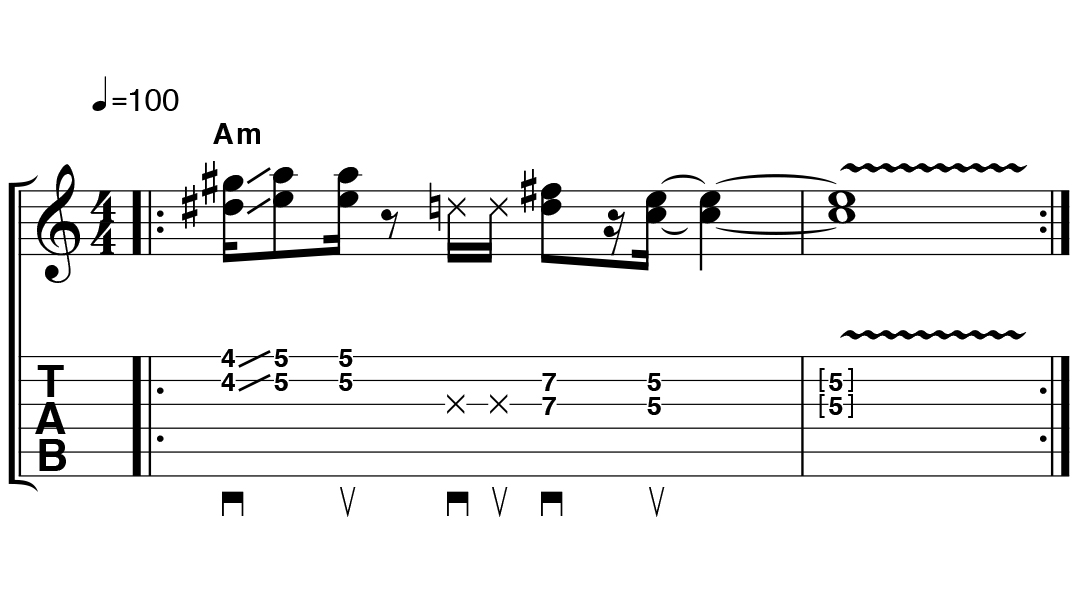5 easy ways to improve your guitar barre chords
Top tips to unlock the fretboard for beginner guitarists

Getting started
If you’ve been playing the guitar for more than a few weeks, you simply must learn some barre chords. This essential technique multiplies the number of chords at your disposal from just a handful to potentially thousands of new shapes.
The idea is simple: a barre is when you press down on more than one string at the same time. It might be two strings, it might be all six - or any number for that matter. Regardless, barres do require more strength than single notes, so expect to see progress in a few days or even weeks, rather than immediately.
Start off by trying out the chord shapes shown here, then follow our tab examples on the opposite page to hone your playing skills.

Two-note chords (aka diads) don’t really have names. Obviously that’s not very helpful though, so sometimes they’ll take a name from another chord that contains the two notes. Other times, you’ll see them in tab without a name. We’ll save explanations of chord names for another day. Just practise the shapes for now.
To expand your basic chord knowledge further, take a look at 5 easy ways to liven up your guitar chords and 30 chords acoustic guitar players need to know.

1. You're Barred!
This funky idea is a great place to start for barre chord newbies as you’ll only be pressing down on two strings at a time. The rhythm is a challenge, though, so practise slowly until you get the feel.
If it helps, leave out the notes marked X. These are muted strings – an oft-used technique in funk, but not essential while you’re learning.
The first pair of notes are played with your first finger and are followed with a slide up to the 5th fret. Use your third finger for the 7th fret notes.

2. Brand New Barre
We’re keeping things funky here as we progress on to some four-string barre chords.
As you cover more strings it’s even more important to make sure that your first finger is in the best spot, so keep this vital digit wedged up close behind the 5th fret.
Take a close look at the F/A chord and you’ll see you only have to ‘barre’ one string (so technically it’s not a barre chord), but, played next to the Am and Am9 chords, it’s easier to keep your finger in barring position.

3. You Too Play Barres
These arpeggios have a great U2 vibe if you dial in a delay effect set to about 375 ms. We’ve kept our audio delay-free though, so that you can clearly hear what’s going on.
The challenge lies in changing from a four-string shape (the Am chord) to a five-string shape (D7). The best way to practise is to ditch the ‘one note at a time’ arpeggio-style playing and practise changing from Am to D7 as full chord shapes.
Keep your third finger pressed down on the 7th fret to anchor you in position as you change shape.

4. All Barre Nothing
This surprisingly fiddly example introduces full barre chord shapes that cover five and six strings – and in both major and minor versions.
We’ve set the changes to a simple audio backing track but you may need to spend some time slowly practising the shifts first.
Although your first finger barres across the 5th fret throughout, we don’t advise pressing down constantly; most likely you’ll need to make small adjustments to your barring finger to accommodate your other fingers as you change chords.

5. Mardy Barre
Now, with a few exercises under your belt, why not try out this rhythm guitar line inspired by the Arctic Monkeys?
With several chord shapes and a number of position shifts, it’s a step up in difficulty so treat it as a longer-term goal that you can build up to.
Again, the muted notes marked ‘X’ are optional. You may find it easier to drop them while you practise, or you may find that playing them helps you stay in the groove. It’s up to you!
To expand your basic chord knowledge further, take a look at 5 easy ways to liven up your guitar chords and 30 chords acoustic guitar players need to know.
Total Guitar is Europe's best-selling guitar magazine.
Every month we feature interviews with the biggest names and hottest new acts in guitar land, plus Guest Lessons from the stars.
Finally, our Rocked & Rated section is the place to go for reviews, round-ups and help setting up your guitars and gear.
Subscribe: http://bit.ly/totalguitar
